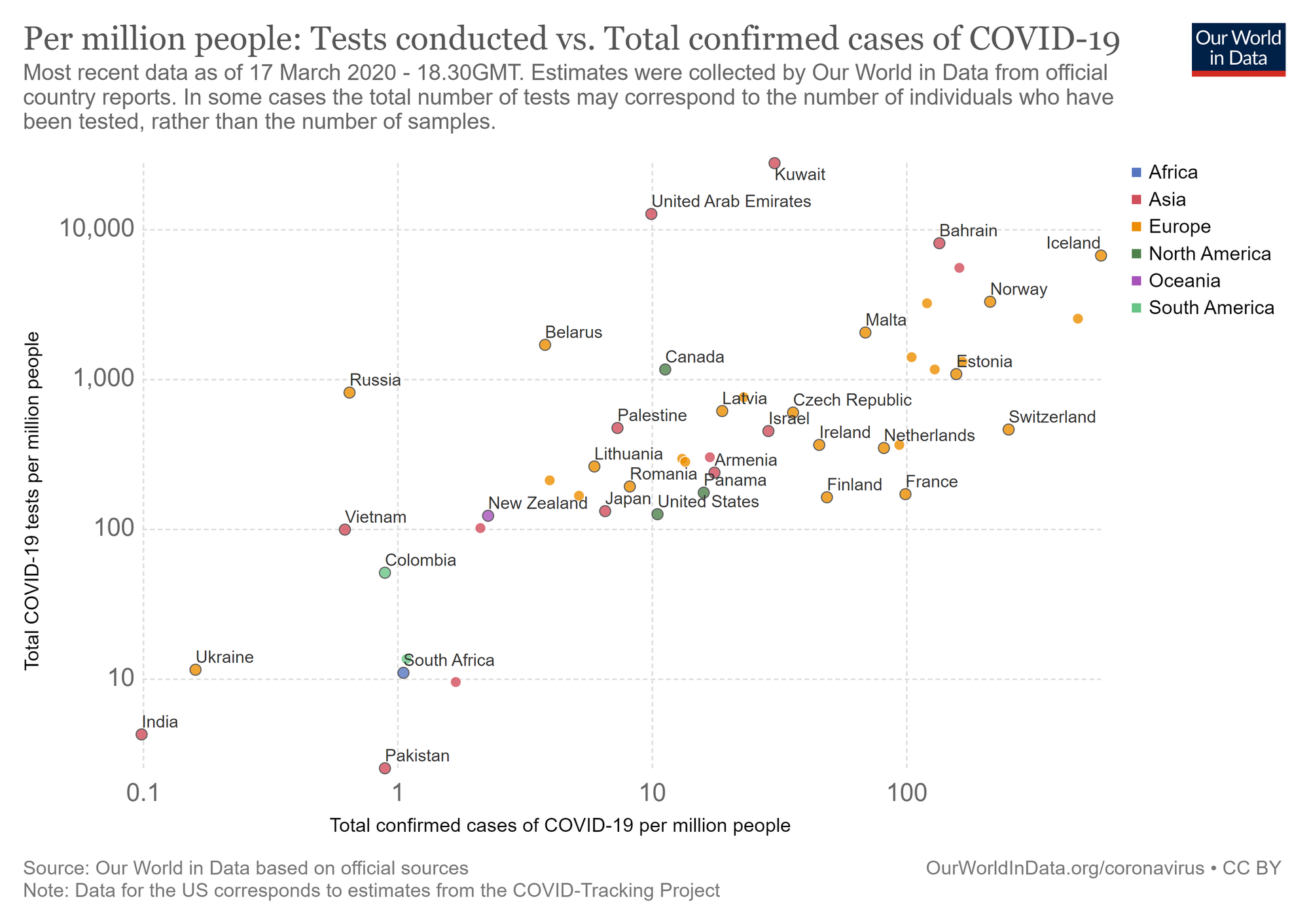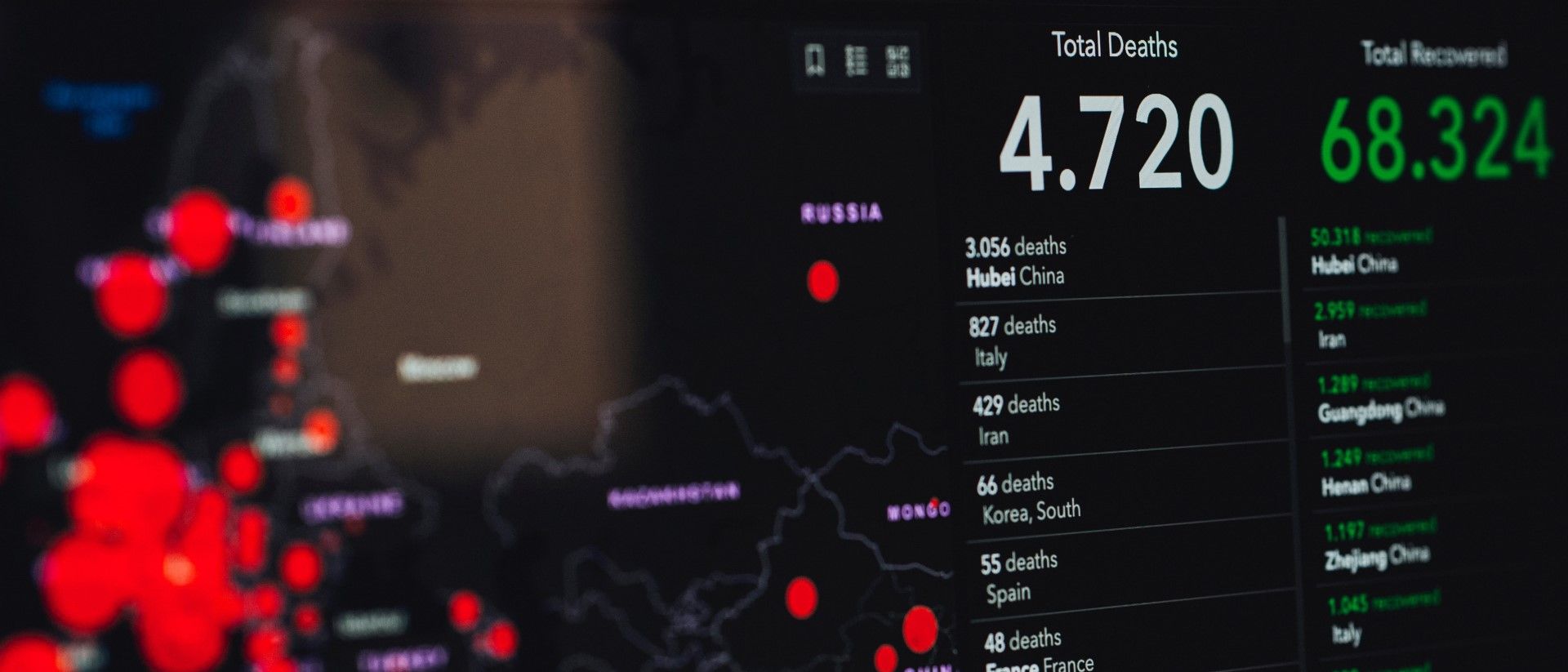
Ten Data Challenges We Face With COVID-19 (Pt. 2)
The past week has been marked by differing levels of government responses. While some announced decisive policies, others went back and forth on the most appropriate course of action. Since COVID-19 was first acknowledged in December 2019 more than 10,000 people are confirmed to have died as a result of the virus. It is clear we need data to combat this pandemic. In the words of the World Health Organisation Director-General: "You cannot fight a fire blindfolded." This article is the second part of the data challenges we face.

6) Data collection is still too slow, and many politicians are too confident. It is incredible to hear officials make claims about infection numbers when only a fraction of the population has been tested. For example, South Africa has a population of roughly 59 million, so it is no surprise that with their low testing rate the last two days have seen their infection rate jump from one to three cases per million. Proactive testing is critical given that as many as one in five carriers is asymptomatic. Limited data = limited insight.

7) We need to think in terms of conditional probabilities. On March 19, a study was published in Nature Medicine that reevaluated the mortality rate of COVID-19 in Wuhan, the Chinese city where the novel coronavirus originated. The researchers estimated the mortality rate at around 1.4% vs. 3.4% previously. While an improvement, this number in isolation can be misleading. After all, the virus impacts people very differently depending on their age and their comorbidities, such as a cardiac conditions or diabetes.
Estimation of COVID-19 Severity (Ferguson et al., March 16)
| Age-group (years) | % symptomatic cases requiring hospitalisation |
% hospitalised cases requiring critical care |
Infection Fatality |
|---|---|---|---|
| 0 to 9 | 0.1% | 5.0% | 0.002% |
| 10 to 19 | 0.3% | 5.0% | 0.006% |
| 20 to 29 | 1.2% | 5.0% | 0.03% |
| 30 to 39 | 3.2% | 5.0% | 0.08% |
| 40 to 49 | 4.9% | 6.3% | 0.15% |
| 50 to 59 | 10.2% | 12.2% | 0.60% |
| 60 to 69 | 16.6% | 27.4% | 2.2% |
| 70 to 79 | 24.3% | 43.2% | 5.1% |
| 80+ | 27.3% | 70.9% | 9.3% |
8) Randomness plays a big role in the spread of the disease. While during times of crises it can be comforting to think that we are able to accurately model and predict the impact of the pathogen, in reality luck plays a big part. For example, this excellent talk by Bill Gates on lessons learned from the 2014 Ebola outbreak reflects on how it was pure chance that Ebola avoided urban areas. This means that not seeing a particular scenario manifest does not necessarily mean the models are wrong – you might simply have gotten lucky.
9) Misinformation erodes trust and increases mortality. With claims of heat exposure killing the virus or scam artists selling anti-coronavirus toothpaste, there is a horrible irony in viral lies contributing to coronavirus deaths. We need to distinguish fake news from rapidly evolving facts. As Laurie Garett wrote: "The 'truth' can, and should, change as investigations and data analysis of COVID-19 proceed, but its bottom line ought to consistently reflect empiricism [and] a solid dose of scepticism and scrutiny."

10) We need leaders that own the facts, no matter how difficult. People love sharing data that make themselves look good. Yet in our current situation, most of the facts are not positive but we still need leaders to acknowledge and communicate them transparently. Confronted by his administration's decision to eliminate their pandemic unit, Trump responded with: "When you say ‘me,’ I didn’t do it ... You say we did that, I don’t know anything about it." Instead, authority figures need to own the situation.
There is evidence that while social distancing and other measures are effective, it is unlikely we will be able to eliminate coronavirus. Instead in future, we should expect periodic reemergences of COVID-19 as uninfected communities are exposed when restrictions are lifted. Although the full social, political, and economic ramifications are still unknown at this stage, what is certain is that data and data-driven policy-making will greatly mitigate the potential costs involved. If there was ever a time for people to embrace analytics, it is now.
– Ryan
Q* Newsletter
Join the newsletter to receive the latest updates in your inbox.




